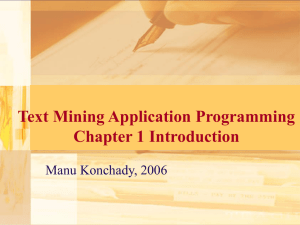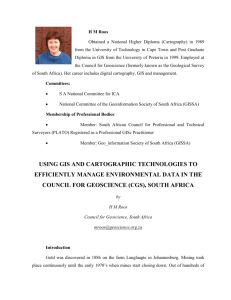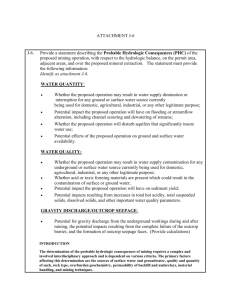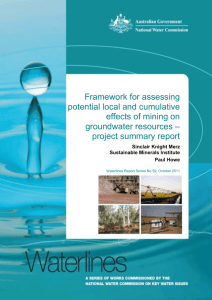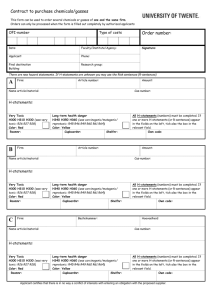5_PP8_SHARP_ICON_Graz_PP8
advertisement
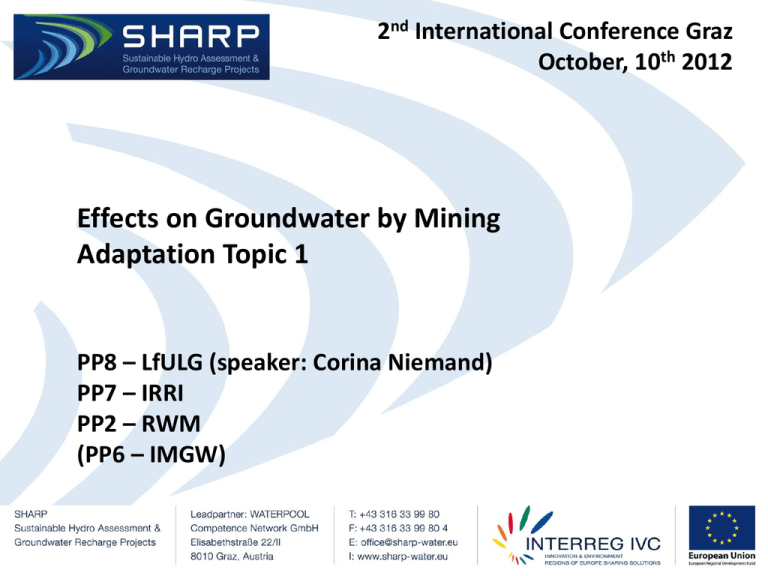
2nd International Conference Graz October, 10th 2012 Effects on Groundwater by Mining Adaptation Topic 1 PP8 – LfULG (speaker: Corina Niemand) PP7 – IRRI PP2 – RWM (PP6 – IMGW) LfULG - Areas of Work Future topics Legal execution Support of policy Research Education Transfer of knowledge and technology Financial support Environmental monitoring PP Mining Areas - Active Mining Ayrshire, Scotland A c t i v e Jänschwalde, Germany www.kier.co.uk Turow, Poland http://img.fotocommunity.com/photos/12070483.jpg fotocommunity.de :Hardy Ulitzka m i n i n g Ptolemaida, Greece Poland (turow, Gwra) A f t e r M i n i n g Greece Radke, Peter (LMBV) But: Way is long and difficult! http://moorbraun.twoday.net/stories/5055934 Quantity Problems (Enormous) groundwater deficit • Lusatian mining area 1990: around 13 billion m³ GW deficit groundwater lowering funnels about 2100 km2 Quality poor water quality of ground and surface waters •low pH values – acid mine drainage •high sulfate concentrations •high concentrations of dissolved iron •containing a high level of suspended solids • and others Adaptation Process: Visiting the mining area Schleenhain Germany (PP7, PP8) Questionnaire for IRRI Answer to Questionnaire Involving/ using information from other projects Visiting mine Turow/Poland and MWTP all PP Visit lake Berzdorf/Germany (flooded) all PP Draft structure adaptation report Visiting mining area Ptolemaida/ Greece Interest of PP2 on this adaptation topic Revised draft adaptation report Questionnaire for PP2--> Table of treatment methods Multiple choice table Draft adaptation report More time Groundwater – Quantity Before mining mining After mining flooded by groundwater and surface water filled Acid mine drainage What can be done? Before mining 1. Quantity 2. Quality mining Mine water treatment plants A c t i v e M i n i n g What can be done? Oxidative mine water treatment Example: Mining Area Schleenhain, Germany What can be done? flooded by groundwater and surface water filled 1. Quantity A f t e r m i n i n g http://www.kuehn-hjp.de/Meuro/e3-44-10b.jpg http://dabonline.de/wpcontent/uploads/lmbv_1042-201x300.jpg 2. Quality What can be done? In Situ In lake On site Microbial sulfate reduction by DSI Stationary entry above and below the water surface Mine water treatment plants Sulfate reduction with fixed-bed reactor Mobile entry above and below the water surface Microbial ammonium reduction Reduction of groundwater recharge Improve sustainability by buffering with CO2 and power plant ash dump and groundwater Seewasser seawater Electrochemical reduction of sulfate runoff water What can be done? Inlake method to neutralize the lake water Inlake - Technologies Use of remediation ships: alkaline buffering by entry of HCO3 generated on board in the surface water body (Inlake liming) reference LMBV What should be done? Basic research Applied research (laboratory / pilot plant test) Pilot test at the site Use in rehabilitation passive / active techniques geotechnical, chemical, physical, biological, microbial processes What should be done? 1 Groundwater Rehabilitation technologies – state of research well Substrat e Heterotrophic Sulphate-Reduction in the aquifer 2 Autotrophic Sulphate-Reduction 3 Membrane process (Nanofiltration) 4 Inlake Reactors for reductive sulphate separation 6 Conditioning of the lake system Infiltration well Surface water Substrate concentratetd groundwater flow moraine clay 7 Reaction carpets for inflow treatment 9 Membrane electrolysis facility Iron sulphate precipitation 10 … … to be amended supported by project VODAMIN The end of the project SHARP is not the end of cooperation • „…Filling old mines with water must be…“ SHARPSong Vers 3 • Enormous water deficit • need to know the water balance in the region • Project of PP7 and PP8 2012-2014 Transboundary catchment area Lusatian Neisse






